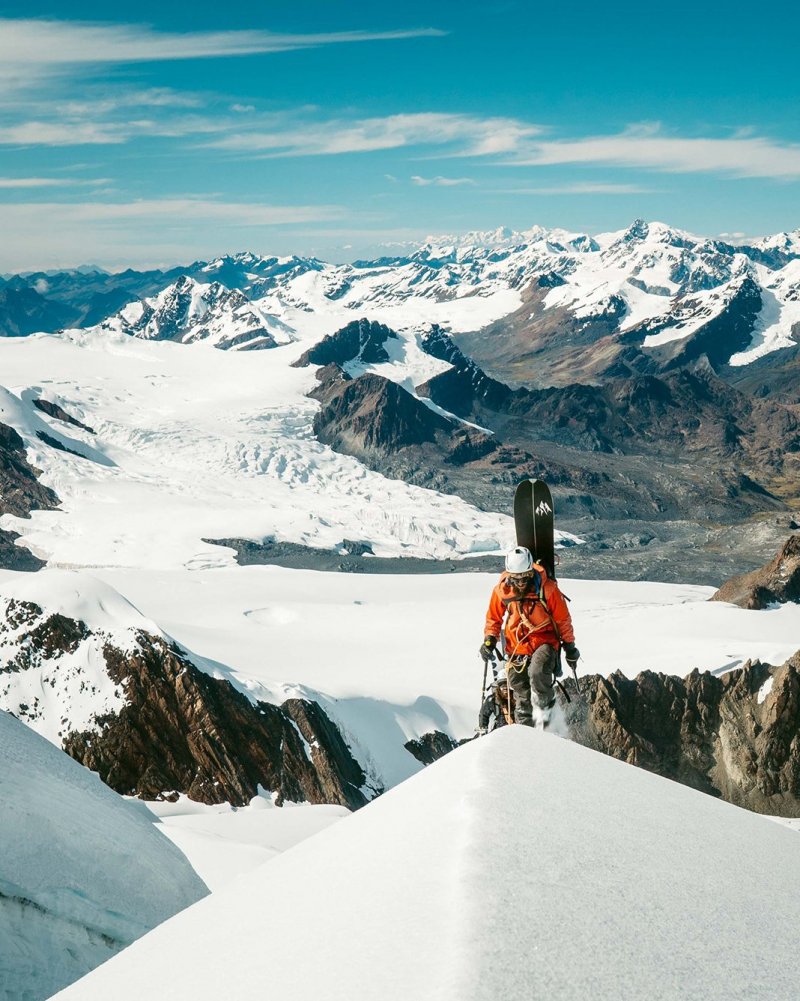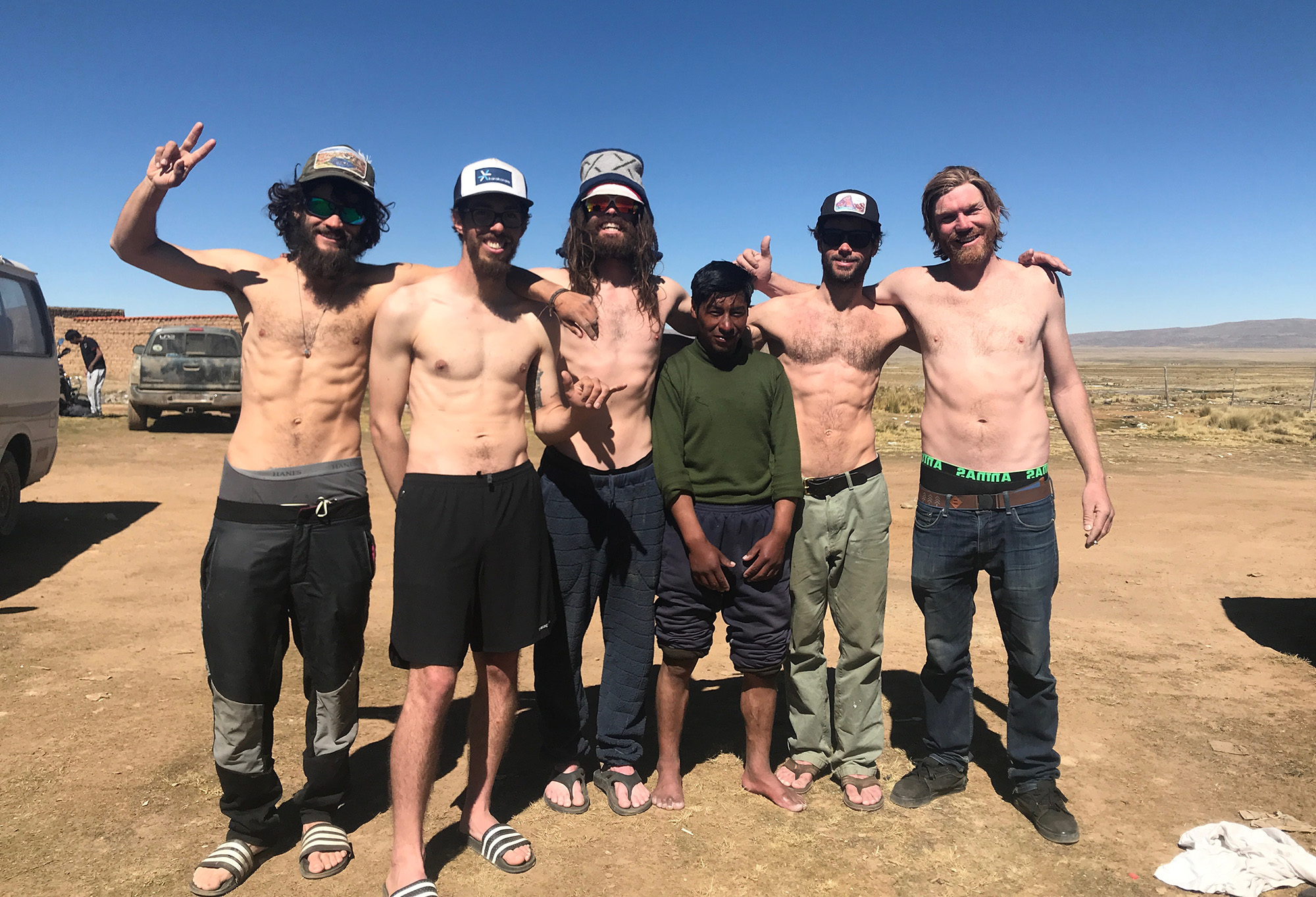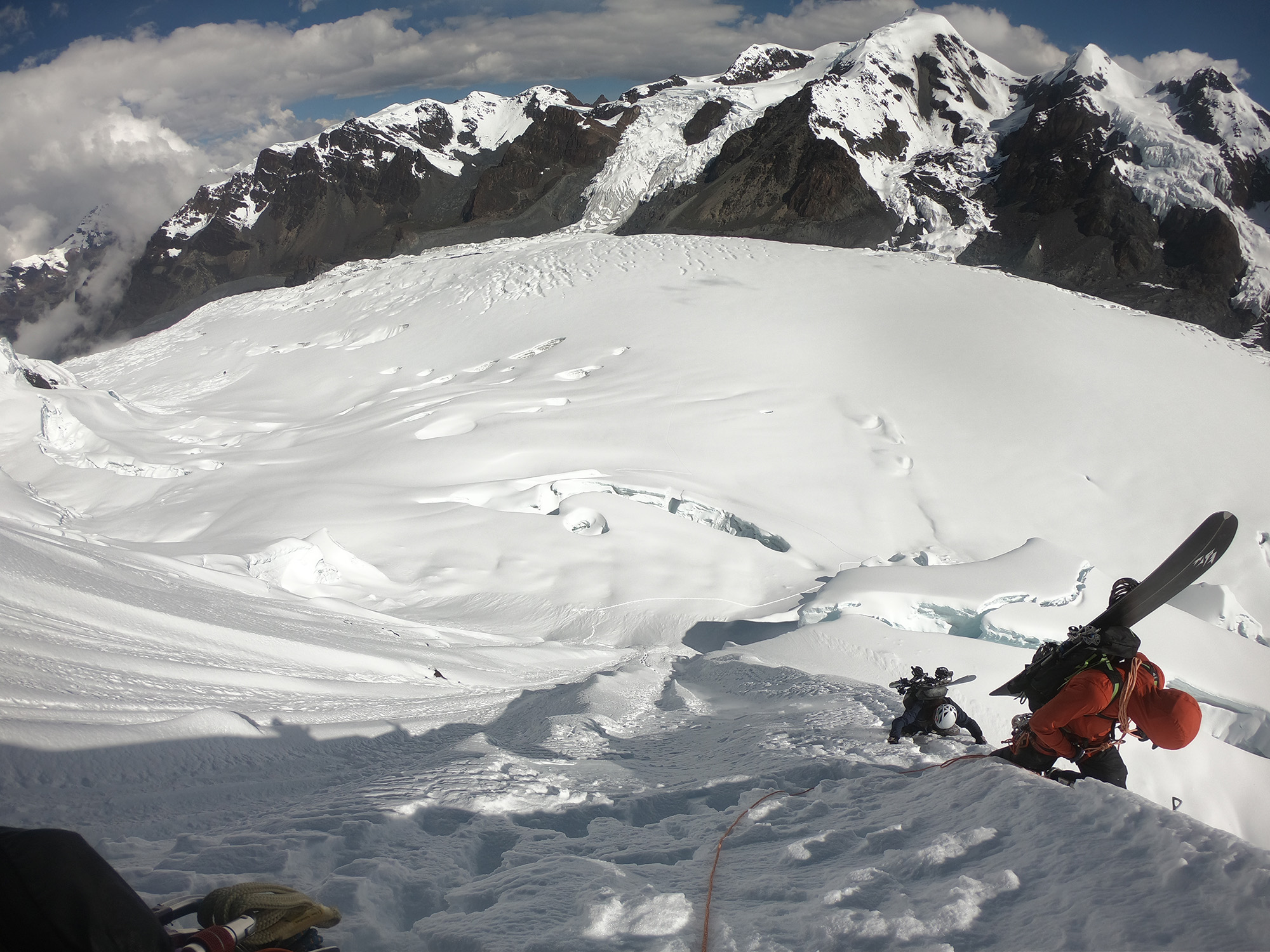Range Of Mystery, a new movie by Jones ambassador Nick Russell and Gray Thompson, shares the odyssey of three snowboarders in search of a fabled mountain range. From Tahoe to India to Bolivia, the movie follows Nick, Gray and Danny Davis as they embark on a human-powered snowboard journey deep into the folds of the unknown.
In celebration of the movie’s iTunes release and world premiere in Lake Tahoe on Dec. 7th, we caught up with Nick Russell to hear about the inspiration for the project and the realities of shredding off the map in the Bolivian Andes.
iTunes link to watch full movie at end of story.
What inspired the Range Of Mystery project?
After returning from a trip to Chile one summer, I was super fired up on the Andes and began looking into the classic ranges throughout Peru and Bolivia. I fell in love with the easy going culture in South America and the access to mind blowing terrain. I mentioned to Jeremy Jones that I was looking into Bolivia and he told me to talk to Jim Zellers. Zellers is the ultimate guru when it comes to obscure expeditions around the world, as he has visited most of the greater ranges on the planet. Sitting in the basement of his house, Zellers told me about a remote range in Northern Bolivia that I had never heard of before; the Cordillera Apolobamba. Zellers, Tom Burt, John Griber and Greg Von Doersten went there back in 1998, focusing on the central and southern sections of the range. With the exception of Jim’s notes and photos, there was hardly any information about the place.
I have a sense of nostalgia for the generations that came before me. It sometimes seems that the world is shrinking; detailed guidebooks, social media and blown out spots can ruin an adventure. I crave simplicity and the process of learning by doing. Nowadays you have to dig deep to find something truly off the radar. Realizing how remote and unknown the Cordillera Apolobamba really was, this mysterious range became an obsession for the next two years.
Nick captures the stoke high on Chaupi Orco.
How did you research the range and the logistics required to go explore there?
Hours and hours were spent pouring over Google Earth and searching for any blogs or trip reports online. There wasn’t much, but what minimal info I did come across was from the early 2000’s. From Zellers’ notes, he had a contact for a Bolivian climbing guide named Marco that organized transportation for them nearly 20 years ago. On a whim, I emailed him and he replied instantly. We met him our first day in La Paz and he was able to line up vans for us to take 8 hours north of La Paz into the mountains.
Did you get discouraged by the lack of info?
There were definitely times of feeling extremely overwhelmed during the whole research and planning process. There are so many factors that go into an international expedition. Aside from dissecting geographical features from a grainy satellite image, it was the fine details that were most stressful; from travel logistics and visas for the crew, budgets and planning meals to deciding what gear to bring. In addition, our goal was to shoot a movie out there. The filmmaking aspect always complicates things tenfold.
Nick and Danny navigate through crevasses and seracs on approach to the Puma wall.
When the Bolivia tickets were finally booked, what was going through your head?
When the tickets to La Paz were finally booked, I had never been more nervous and excited. This was definitely the most ambitious project I’ve ever worked on and it was a total gamble. What if the glaciers have receded too much to even ride on? Sure, it was good for those guys 20 years ago, but has climate change ruined any possibility of scoring decent snow? Would the faces be bulletproof ice? Would our luggage make it? Would someone get sick, hurt or worse? There were so many unknowns that kept me up at night in the weeks leading up to the trip. Yet once we got on the plane, the outcome would ultimately be left to the universe. Sometimes you need to roll the dice and take a chance in order to reap the rewards.
The Apolobamba crew: Nick, Gray, Danny, Murph, and Justin.
How did the expedition crew come together?
Group dynamic is one of the most important cogs in the wheel that is any successful outing. Living in such close corridors in a remote landscape for an extended period of time requires a harmonious blend of personalities and skills.
Gray Thompson has become one of my main riding partners over the past couple years, mostly around the Sierra, working on Warp Wave projects and exploring our backyard of Lake Tahoe. A jack of all trades, he is not only one of my favorite riders to watch, but a wizard behind the lens with editing skills to match.
Danny Davis is one of my oldest friends from back east and current roommate here in Tahoe. One of the most prolific freestyle riders of our generation, I’ve been convincing him more and more over the last few seasons to join me in the backcountry. Dan has steadily been feeling the pull of the mountains, stepping into the mountains and adapting with ease.
Nathaniel Murphy (Murph) is a guide out of Jackson and always up for an ambitious mission. Being one of the strongest and most knowledgeable people I know in the big mountains, I asked Murph to come run safety for us. Shooting photos we had PNW local, Justin Kious behind the lens.
Upon arrival in Bolivia what were your first moves?
We spent about five days in La Paz, picking up supplies and acclimatizing to the country’s capital at 12,000 ft. Just walking up the stairs of the hotel gets you out of breath. Even the little things like grocery shopping become a mission in a foreign country. We organized gear, took food inventory, packed, repacked, and packed again before finally leaving the city. Driving past the Cordillera Real at sunrise was one of the most peaceful sights I have ever seen. We drove more than eight hours before reaching the small village of Pelechuco, our final outpost of civilization. Due to developments in roads for mining, we discovered that it would be possible to drive along a sketchy dirt road into the mountains from the village, rather than walking with pack animals to base camp. We took a three and a half hour ride in the back of a bumpy 4x4 truck over several passes to the end of the road.
High camp in the moraines at 16,500 feet.
Describe the scene at base camp and the potential of the surrounding terrain.
From the map, it looked like the best place for basecamp was right next to the lake, but in reality ended up being perched in the back this valley, roughly 500 feet up and about 2 miles away. Normally this would be a mellow walk, but with three weeks worth of supplies, it necessitated carrying multiple loads spanned over 16 miles. We stumbled in with our final loads in the dark, devoured pasta, set up tents and collapsed.
From the basecamp at 14k, we couldn’t even see the snow line. The glacial valley would remain hidden from view until pushing up towards highcamp, about 3 hours away. High camp was at 16,600 ft and from there most of the peaks were still out of view, behind another ridge. This was a rugged and intimidating environment. At first glance, much of the terrain looked unrideable due to broken glaciers and closeout lines. With time, we slowly figured things out and were able to get into some pretty great stuff.
The crew eyes up the SE face of Chaupi Orco.
What was the goal of the trip? Did you have a specific summit in mind?
Our goal was to climb and ride Chaupi Orco, the highest peak in the Apolobama at 19,828 feet (6043 meters). We ended up summiting Chaupi Orco on our third attempt. Two failed attempts gave us a solid understanding of most of the route and where we could travel off-rope. On summit day, we woke at 3 am and moved fast, aiming to be off the peak by noon. The last 800 feet of the climb were the most technical. Moving in two teams of two, we climbed through one ice pitch and over open crevasses on the westerly aspect of the mountain before gaining the enjoyable final summit ridge. Standing on the summit at nearly 20,000 ft was the highest any of us had ever been before. Equatorial snowpacks were also a new thing for us. The snow was a combination of preserved powder and transitional spring snow. The SE Chaupi headwall was firm yet edgable, minimizing avalanche risk from the equation.
Nick and Danny climb the Puma wall.
Nick rips the first track down the Puma spines. Photo - Danny Davis
After the successful summit shred, what was next?
After Chaupi, our focus shifted to a wall on another glacier we had named the ’Puma Spines’. There was a lot of weather the first half of the trip, hiding the Puma face in the clouds most afternoons. Looking out from highcamp, we’d periodically get glimpses of the most beautiful face any of us had ever seen. On the last day of the trip before our scheduled truck pickup back at the lake, Danny, Murph and I decided to cross into unknown territory onto a new glacier and give it a shot. There was a 50/50 chance that it would be complete ice, but upon reaching the apron, we discovered perfect boot top powder all the way up the 50 degree slope. It was probably the steepest and most sustained pitch I’d ever climbed. The ascent was quite puckering yet supportable under foot, making the glaciated exposure below manageable and justifiable. Luckily everything worked out exactly as planned and ended up being the most proud line of my life.
Loading up for the walk back to base camp.
What Jones gear did you bring and why?
I’ve become super comfortable on my Ultracraft Split 156 as my go-to board in large terrain. It’s light weight makes foot travel easier, especially at high altitude. I love the samurai sword-like characteristics of that board, allowing for smooth and quick maneuvering in variable snow conditions. The Minimalist 45 L is my top pack choice for long days requiring the whole kit (crampons, glacier gear, etc). The Nomad Pro skins are also part of my daily essentials.
What feeling are you left with from the adventure?
Successful missions in the mountains always spark the fire for the future. There is so much out there, from our backyards to overseas journeys. I’m not sure where I will go next, but I do know that the list is endless.
Link to watch full movie on iTunes here
World premiere December 7th at Tahoe Art Haus in Tahoe City - Details here
Apr

Apr

Apr

Mar

Mar

Mar










